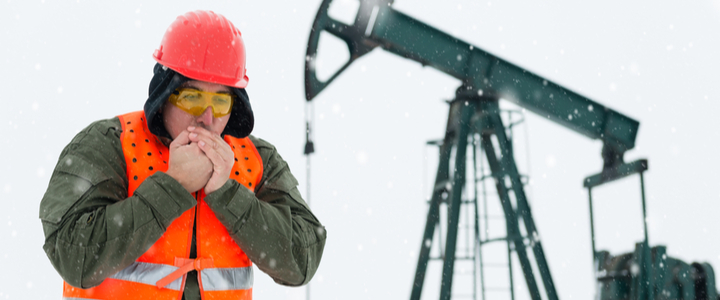Winter can spell disaster for businesses that are under-prepared. If your company is in an industry that focuses on outdoor work, you need to take special precautions. Otherwise, your workflow and efficiency will be significantly impacted. Even worse, your workers could get severely injured.
In this article, we’ll discuss how winter can affect your approach to a worksite and offer industrial safety tips for working in cold, harsh environments.
How Winter Changes Your Safety Approach
Winter brings three terrible things to the workplace: snow, ice, and illness. Winter has a way of changing the landscape of your worksite in unpredictable ways. Because of this, it is paramount to find ways to safely navigate the changes winter brings.
When winter weather begins, movement can quickly become hazardous due to slippery surfaces and snow. Even in temperature-controlled environments, workers can bring in colds, flu, or other illnesses, increasing risks.
In the winter, your workers might be suddenly faced with dangers like tripping, falling, frostbite, cold stress, and even hypothermia. To keep your workers and clients safe, you need to implement safety strategies that will reduce or eliminate the dangers winter brings.
Cold-Weather Inspection and Planning
The first thing you should do is inspect your worksite and note all possible problem areas. These could include walking paths, exits (including emergency exits), break rooms, access points, and anywhere else that people will likely move through.
Come up with plans to remove frost or snow, de-ice walkways, and provide temporary heat sources for outdoor work. These plans should include gathering any supplies that will be needed to weatherize the workplace well ahead of time and setting up supply lines for times when you need more.
Next comes winter safety training. Teach your workforce how to prepare for cold weather, especially if they work outdoors. Proper cold weather safety training will help workers to identify hazardous environmental conditions. It can also help them to recognize workplace injuries or illnesses due to cold stress.
Finally, encourage your workers to dress appropriately for winter conditions and eat and drink properly to stay hydrated and fueled in cold weather.
Tips for a Safe Cold Weather Season
As we head into winter, it’s important to note that changes in the season may mean changes in the safety precautions taken by your industry. Here are some tips to ensure you’re prepared for a safe cold-weather season.

Look for Symptoms of Cold Stress
One of the most important things for your workers to understand is recognizing the effects of cold stress and other cold-induced illnesses and injuries. With proper knowledge, they can stop work and seek help before the problem seriously affects their health.
Cold stress is very common in outdoor workers. It happens when a person’s skin temperature is lowered, followed by their internal temperature. Cold stress is the precursor to more serious ailments like trench foot, frostbite, and hypothermia.
To fight cold stress, you can follow a few easy strategies. First is the buddy system. Having workers work in pairs or small groups helps your employees to spot signs of cold stress in each other instead of relying on self-reporting.
Dress Appropriately
Ensure your workers dress in three or four layers, including a wicking layer, a light insulating layer, a heavy insulating layer, and a windproof or waterproof layer. Synthetic or polypropylene long johns, a lightweight fleece, a wool sweater, and a Gore-Tex jacket are an especially effective combination.
Always make sure your workers wear hats. Up to half of all body heat escapes through the head. A balaclava or face mask is also effective for those who need to protect their faces from the cold.
Rest and Rehydrate
Make sure to allow your workers to take several short breaks. This will give them a chance to heat back up, hydrate, and let their bodies rest before continuing.
Proper rest and hydration will reduce risks significantly. For hydration, discourage or limit coffee and other caffeine products, as caffeine reduces the body’s ability to heat itself and can even lead to dehydration. If possible, schedule work during the warmest hours of the day.

Partner with the Right Industrial Safety Consulting Firm for Winter
Winter safety is something every industry needs to take seriously to ensure lasting success. By partnering with a safety consulting firm like Safety By Design, you can keep your operations safe without sacrificing deadlines.
The experts at Safety By Design will propose solutions based on your needs, together with federal safety requirements, and will implement them within a specified timeline. From there, we provide unlimited consulting and regular follow-ups.
Contact Safety By Design today to schedule a consultation.
Tags: cold weather safety, industrial safety tips, safety training, winter safety



